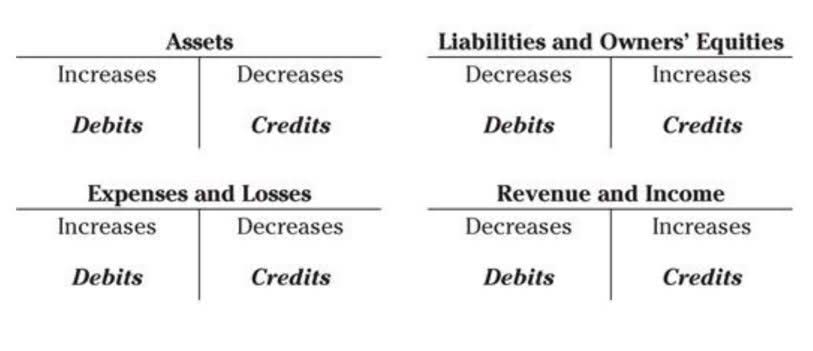
While there are a few drawbacks, note that there are two months each year with three payroll cycles. In this guide, we’ll dive into various payroll options and provide insights into the advantages of each. Rachel Blakely-Gray is a writer for Patriot Software, a provider of payroll and human resources management solutions for small businesses.
Key Differences Between Bi-Weekly and Semi-Monthly Pay
Moreover, bi-weekly and semi-monthly pay can impact employees’ ability to save and invest. Monthly pay allows individuals to allocate a portion of their income towards savings goals more easily. In contrast, more frequent paychecks can increase the temptation to spend, resulting in lower savings rates.
Biweekly vs. semimonthly payroll: Chart

When employees are paid on a semimonthly basis, they’re paid twice a month regardless of how many weeks there are. That means 24 pay periods per year, or two less than under the biweekly payroll model. This additional variability has made the semimonthly approach less popular with U.S. employers, with less than 20 percent opting to use it.

Stay up to date on the latest payroll tips and training
Semi-Monthly basically means the payment is made and received twice a month. Typically, it occurs on fixed days like the 1st, 15th, or 30th of the month. The primary distinction between these pay frequencies lies in the number of pay periods and the consistency of pay dates. While bi-weekly pay provides 26 pay periods, semi-monthly pay offers 24. The choice between bi-weekly vs semi-monthly payroll hinges on an organization’s individual needs and preferences. Biweekly payroll means employees are paid every other week, totaling 26 paychecks per year.
You would think that since there are generally four weeks in every month, these would equal the same thing. Hearing the terms ‘bi-weekly’ and ‘semi-monthly’ might sound confusing if you’ve never come across them before. So, what’s the difference between these phrases, and what do they mean exactly? We’ll cover all of this below and teach you how to pronounce both words, as well as use them in a sentence correctly. Learn all about the reasons why employees fail to clock in and out on time and find out the ways to prevent this successfully.
- Semi-monthly pay refers to a payment schedule where employees receive their wages twice a month on predetermined dates.
- You can also learn about many other commonly misused terms in the confusing words section here.
- Semi-monthly payroll includes 24 payments a year, meaning there are 2 paydays every month.
- Before finalizing the payroll schedule that best suits you, you may also consider some other types of payroll schedules.
- As stated previously, semi-monthly payments can get affected by weekends.
The difference between ‘semi-monthly’ and ‘bi-weekly’ when it comes to payroll is that the number of checks you get is slightly different. To be able to do payroll with Clockify, you first need to create and assign projects (you can assign as many people as you want for free). Then, you can set hourly rates and calculate how much you will get paid, or how much you should pay your employees. It requires you to be familiar with many laws and regulations and think of your employees’ well-being too. If this is a constant problem for you, check out our article on this topic.
Steps to Calculating Overtime to Avoid Payroll Mistakes
A semi-monthly or bi-monthly pay schedule means pay checks are distributed two times a month, usually on fixed dates such as the 1st and 15th, or the 15th and 30th. However, they may not necessarily fall on the same day of the week, and you would end up paying your employees 24 times in a year instead of 26. Employee preferences for pay schedules can vary based on individual financial situations and https://www.bookstime.com/ personal preferences. Some employees prefer bi-weekly pay for its regular cash flow, while others prefer the predictability of semi-monthly pay. Rather than settle on one approach, many companies instead pay their employees under more than one frequency. While doing so might sound untenable if you’re handling payroll in house or with spreadsheets, it’s actually a routine ask of most payroll vendors.
- The choice between bi-weekly vs semi-monthly payroll hinges on an organization’s individual needs and preferences.
- Once payroll time comes, you can easily export all necessary data in CSV, PDF, Excel, or API formats.
- Biweekly payroll means employees are paid every other week, totaling 26 paychecks per year.
- When businesses operate on a biweekly pay schedule, overtime pay is much simpler to calculate than when operating on a semi-monthly pay schedule.
- Overall, when you have a biweekly pay schedule, you’ll receive 26 paychecks per year.
- By examining these aspects, you can choose a payroll schedule that supports both your business needs and your employees’ financial well-being.
Something that happens every two weeks also happens twice in a month, so bi-weekly and semi-monthly are de facto synonyms. Most months contain three full weeks, as well as enough extra days to bring the total up to 30 or 31 days. The key to this puzzle lies in the meanings of the prefixes semi- and bi-. Yes, different states and countries have varying regulations regarding pay frequency and employee rights.
- Bureau of Labor Statistics ranking biweekly pay as the country’s most popular pay frequency.
- Rachel Blakely-Gray is a writer for Patriot Software, a provider of payroll and human resources management solutions for small businesses.
- For example, a bi-weekly pay frequency on a Thursday would mean employees get paid every other Thursday of the month.
- Most often, you’ll be given one check at the beginning or in the middle of the month and another at the end of the month.
- Take into account your company’s overall payroll preferences and your employees’ needs.

The implementation of a bi-weekly pay system can have a positive impact on employee morale and job satisfaction. Knowing that they will receive a paycheck every two weeks creates a sense of stability and financial security for employees. This assurance can lead to increased employee loyalty, engagement, and retention, as employees feel valued and appreciated by their semi monthly vs bi weekly employers. Bi-weekly payrolls require accurate time and attendance tracking, which benefits both employers and employees. Employees are motivated to maintain precise records of their working hours, breaks, and time off when they know their pay is directly tied to their attendance. This promotes transparency and reduces the likelihood of errors and disputes.
- Knowing what is semi-monthly pay or what is a semi-monthly paycheck can help you determine the best fit for your company.
- Since you usually calculate the pay in two-week increments, it is easier to factor in the overtime since the increments are always fixed.
- It can prove to be demotivating for the employees who have to spend hours together on their job to earn the money necessary to meet their various expenses.
- Typically, you may encounter weekly, biweekly, semimonthly, or monthly payment schedules.
- For full-time employees that have regular deductions and benefits, a semi-monthly pay strategy will likely work best.
Unlike bi-weekly pay, which occurs every two weeks, semi-monthly pay happens twice a month, regardless of the day of the week. Ultimately, the choice between bi-weekly and semi-monthly pay depends on various factors, including company policies, payroll systems, and employee preferences. Some employees may favor bi-weekly pay for its consistency and the possibility of more frequent paydays, while others may prefer semi-monthly pay for its predictable pay dates. In contrast, semi-monthly paydays are anchored to specific dates, which can occasionally vary depending on weekends and holidays.

